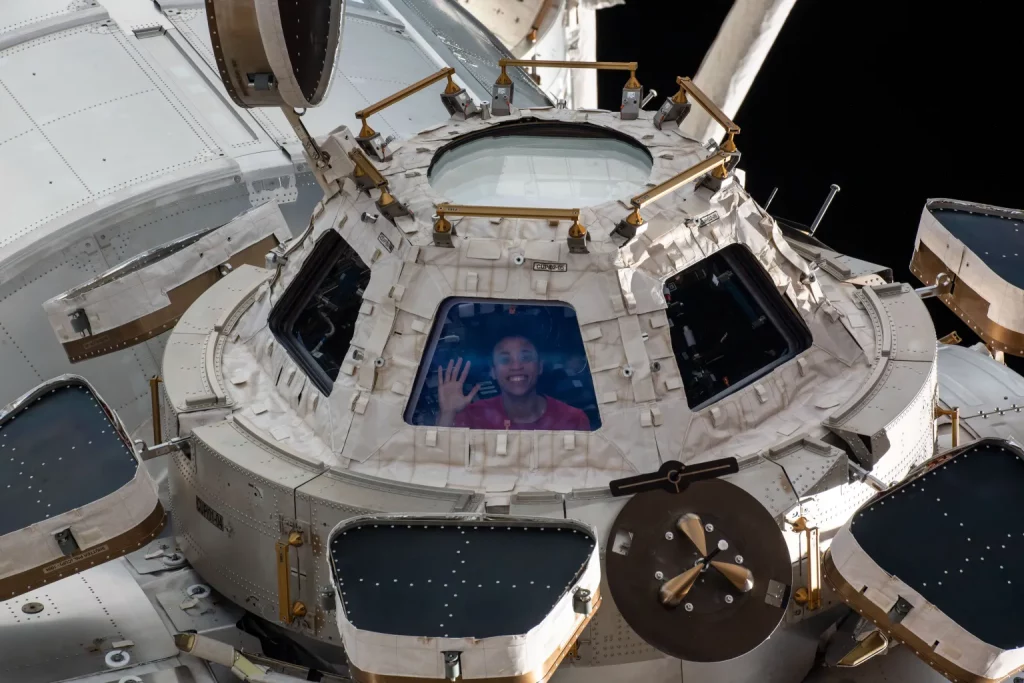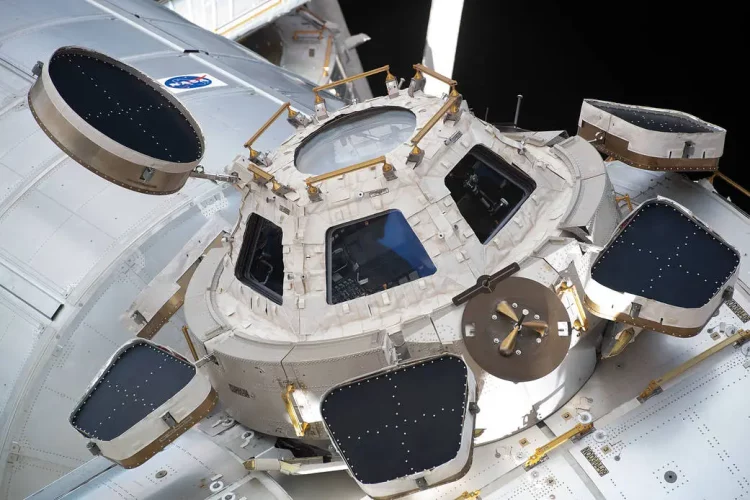Introduction
The International Space Station (ISS) stands as one of humanity’s greatest achievements in space exploration. This orbiting laboratory, which orbits Earth approximately every 90 minutes, offers a unique vantage point for scientific research and international cooperation. Among its many features, one of the most intriguing aspects is its capability to observe Earth through its windows. This article delves into the significance of the ISS’s windows, exploring their role in scientific research, education, and public engagement, as well as the broader implications for our understanding of Earth and space.
The Design and Functionality of ISS Windows
The ISS is equipped with several windows that provide astronauts with an unparalleled view of Earth and space. These windows are strategically placed to serve various functions, from scientific observations to daily operations and crew morale.
1. The Cupola Module
One of the most prominent features of the ISS for viewing Earth is the Cupola module. The Cupola is a seven-windowed observatory that provides astronauts with a panoramic view of the Earth and space. Its design allows for a 360-degree view, making it ideal for observing and photographing Earth’s surface, spacewalks, and docking procedures.
- Design: The Cupola’s windows are made from multiple layers of advanced materials, including high-strength glass and protective coatings, designed to withstand the harsh conditions of space while offering crystal-clear views.
- Function: Beyond its observational capabilities, the Cupola is used for docking operations, where astronauts monitor spacecraft approaching or departing from the ISS. It is also a favorite spot for astronauts to relax and view Earth, providing a sense of connection to their home planet.
2. The Destiny Laboratory Windows
The Destiny Laboratory, one of the primary research modules on the ISS, also features windows that provide important observational capabilities. These windows are designed to support scientific experiments and observations.
- Design: The windows in Destiny are equipped with filters to block out harmful solar radiation while allowing scientists to conduct experiments with a clear view of Earth and space.
- Function: These windows facilitate experiments that require visual observation, such as studying the effects of microgravity on various materials and biological systems. They also enable scientists to capture high-resolution images and videos for research purposes.
The Role of ISS Windows in Scientific Research
The windows of the ISS play a crucial role in a wide range of scientific research activities. Their unique vantage point allows for observations and experiments that are not possible from the ground. Here are some key areas where ISS windows contribute to scientific research:
1. Earth Observation
The ability to observe Earth from space provides scientists with valuable data on various environmental and atmospheric phenomena.
- Climate Monitoring: By capturing images of Earth’s surface and atmosphere, scientists can monitor changes in climate patterns, track natural disasters, and study environmental changes over time. For instance, the ISS has provided critical data on the impacts of deforestation, urbanization, and natural disasters such as hurricanes and wildfires.
- Disaster Response: The ISS’s observations can assist in disaster response efforts by providing real-time data on affected areas. This information is crucial for coordinating relief efforts and assessing the extent of damage.
2. Astronomical Observations
The ISS also serves as a platform for astronomical observations, allowing scientists to study celestial objects and phenomena.
- Space Weather Studies: The ISS provides a vantage point to study space weather phenomena, such as solar flares and cosmic rays, which can impact satellites and communications systems. Understanding space weather helps in predicting and mitigating its effects on technological systems.
- Astronomical Imaging: The windows on the ISS enable astronomers to capture images of distant celestial objects, such as stars, galaxies, and nebulae. These observations contribute to our understanding of the universe and the formation of cosmic structures.
3. Biological and Environmental Research
The ISS windows are used to observe and study the effects of microgravity on biological organisms and environmental processes.
- Microgravity Experiments: Researchers study the behavior of fluids, gases, and biological organisms in the microgravity environment of space. Observations through ISS windows help in understanding how these systems function in the absence of gravity, which has implications for both space exploration and terrestrial applications.
- Plant Growth Studies: Experiments on the ISS include studying how plants grow and develop in space. Observing plant growth through the windows provides insights into how plants adapt to microgravity and helps in developing techniques for growing food on long-duration space missions.

Educational and Public Engagement Through ISS Windows
The ISS windows also play a significant role in educational outreach and public engagement. The breathtaking views of Earth and space captured by astronauts are used to inspire and educate people around the world.
1. Educational Programs
NASA and its international partners utilize images and videos from the ISS to support educational programs and initiatives.
- Classroom Activities: Teachers use ISS images and videos to engage students in lessons about Earth science, space exploration, and environmental stewardship. The visuals help students connect with scientific concepts and inspire interest in STEM (science, technology, engineering, and mathematics) fields.
- Educational Outreach: The ISS provides opportunities for students to participate in live communication sessions with astronauts. These interactions allow students to ask questions, learn about life in space, and gain firsthand insights into space exploration.
2. Public Engagement
The ISS captures the imagination of the public by providing stunning images and videos of Earth from space.
- Social Media: NASA and other space agencies share images and videos from the ISS on social media platforms, reaching millions of people worldwide. These posts highlight the beauty of our planet, raise awareness about environmental issues, and foster a sense of global unity.
- Documentaries and Media: Footage from the ISS is featured in documentaries, films, and television programs, showcasing the wonders of space and the achievements of human spaceflight. These media productions help to communicate the significance of space exploration and its impact on our understanding of the universe.
Future Developments and Innovations
As space exploration continues to evolve, future developments in space station design and technology will enhance the observational capabilities of space missions.
1. Enhanced Viewing Technologies
Advancements in viewing technologies will improve the quality and functionality of space station windows.
- Advanced Materials: Research into new materials will enhance the durability and optical quality of space station windows, allowing for clearer and more detailed observations.
- Integrated Sensors: Future windows may incorporate integrated sensors and imaging technologies to provide real-time data on environmental conditions and astronomical phenomena.
2. International Collaboration
The ISS is a symbol of international collaboration, and future space stations will continue to build on this spirit of cooperation.
- Global Partnerships: Collaborative efforts between space agencies and international partners will drive the development of new space station modules and observatories. These partnerships will enhance the scientific capabilities of space missions and promote shared goals in space exploration.
- Expanding Research Opportunities: Future space stations will offer new research opportunities, including advanced biological and physical sciences experiments. Enhanced observational capabilities will support a wide range of scientific investigations and technological innovations.
Conclusion
The windows of the International Space Station offer a unique and invaluable perspective on Earth and space. From facilitating scientific research to engaging the public and inspiring future generations, these windows play a crucial role in our exploration of the cosmos. As technology advances and international collaboration continues, the ISS will remain a beacon of human ingenuity and a gateway to understanding our planet and beyond.
Through the lens of the ISS, we gain not only a view of our own world but also a window into the boundless possibilities of space exploration. The observations made through these windows contribute to our knowledge, foster global unity, and inspire a sense of wonder about the universe.


















































Discussion about this post